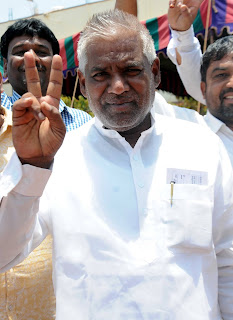Saga of Check Dams in Bidar
‘The positive effect of these structures is obvious’
Sony X9004 Series - Experience Perfection With 4K Picture w/ Magnetic Fluid Speakers.www.sony.co.in/Bravia_4k_TV
The 1,300 check dams constructed in the district have helped in replenishing Bidar’s water reserves
In 2003, the district administration spent Rs. 85 lakh a year to supply drinking water in tankers to 70 villages in the district. Nine years on, the tankers have completely vanished.
This is mainly owing to the 1,300 check dams and feeder watersheds in the district, which have greatly helped in replenishing the district’s water reserves over the last few years. Impact studies conducted by the Mines and Geology Department revealed that “there was very high sustainability of ground water” over two four-year cycles due to these check dams.
“The positive effect of these structures is obvious,” said P.M. Khan, senior geologist who authored the impact report. “Most of the sugarcane in the district is on non-irrigated land. Despite that, farmers have produced enough sugarcane for three factories and ten Khandsari (mini-sugar making units). Across the five taluks, villages ranging from Karpakapall in Humnabad, which has the highest rainfall, to Kamal Nagar in Aurad, which receives the least, these structures have made a difference to the lives of people,” he said.
He points out that the check dams have helped recharge wells and increased the yield of borewells. A single check dam built on a stream in Chitta village has not only ended the village’s water scarcity but also helped villages downstream, such as Amalapur, Gornalli and others. The single or multiple arch buttress check dams, developed by the Bidar Zilla Panchayat, have now acquired the moniker ‘Bidar-model’ check dams. They are four times cheaper than traditional stone check dams and last ten times longer. They are easier to build, as prefabricated components can be used to erect them. The arch in the middle redistributes the water throughout the structure, making impounding of water easier than other watershed structures. Check dams have also proved to be cost-effective.
On average, a major irrigation project impounds between 89 and 102 litres of water for every rupee spent. The check dams, however, have succeeded in holding back 150 litres of water for every rupee spent, according to zilla panchayat engineer Arun Kumar.
Impressed by their performance, Chief Secretary S.V. Ranganath recommended that such structures be constructed across the State, especially in areas where the groundwater level has fallen. “Check dams have also been built in some villages of Hassan district where all the water sources were fluoride-contaminated. Their impact is being studied,” said Naveen Raj Singh, Commissioner, Social Welfare.
A team led by Mr. Singh and IFS officer Manoj Kumar had designed the new check dams and built the first 300 structures. Then, Bidar Zilla Panchayat engineers Mallikarjun Gunge, N.A Patil and Arun Kumar and others continued to construct the ‘Bidar-model’ check dams under various schemes.
“These check dams are the pride of Bidar. The district has 600 villages and 300 hamlets. It means we have three check dams for every two villages. Farmers who opposed the construction of check dams near their fields, are now inviting us to build them on their land,” said zilla panchayat president Latha Harkude.


Comments